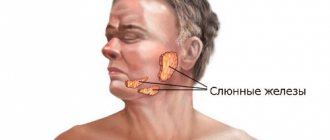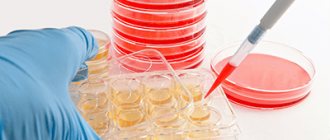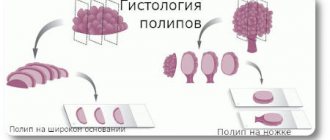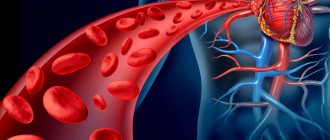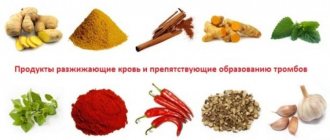Blood during bowel movements is the main sign of bleeding from the lower gastrointestinal tract. The cause of their occurrence, in most cases, is diseases of the large intestine and anorectal area. In rare cases, such bleeding occurs when the upper gastrointestinal tract is affected, vascular pathology, or blood diseases.
If blood is visible in the stool - reasons
Anal fissures.
Bright scarlet blood not mixed with feces is a symptom of anal fissure. It is formed during chronic constipation, when the patient makes excessive muscular efforts during bowel movements. After the feces have left the ampulla of the rectum, slight discomfort is felt in the area of the anal fissure. Blood in the stool with this pathology is observed for several days, its volume is quite small.
The diagnosis can be made by visual examination by a surgeon or proctologist, as well as by digital examination of the anal area. Correction – restoration of regular bowel movements through diet and the use of laxatives. Additionally, Anuzol or suppositories with sea buckthorn oil are used for 5-7 days.
Haemorrhoids.
Dark blood in the stool, regularly appearing on its surface, pain and itching in the rectum, accompanied by a feeling of fullness - symptoms indicating hemorrhoids (varicose veins of the rectum). There are many reasons for the appearance of hemorrhoids, all of them are associated with overexertion of intra-abdominal pressure and stretching. Damage to the vascular walls causes bleeding.
With external hemorrhoids, varicose nodes are visible during visual examination; with internal hemorrhoids, they are detected during sigmoidoscopy of the rectum. Treatment of hemorrhoids involves conservative therapy and surgery. Drug therapy is used in the early stages of the disease. These are venotonics in the form of tablets (Troxerutin, Detralex, Ginkor forte, Venoruton, Venolan), drops and dragees (Eskuzan), ointments and gels (Troxevasin, Antistax, Venitan), venosclerosing agents (Hepatrombin G in the form of suppositories, Ethoxysklerol). Additionally, NSAIDs, anticoagulants and laxatives are used.
Surgery to remove hemorrhoids is carried out in advanced cases, at a late stage of the disease, or in emergency cases - in case of heavy bleeding from a venous hemorrhoid.
Nonspecific ulcerative colitis.
This disease is the result of inflammation of the immune system. With ulcerative colitis, destructive processes are observed in the mucous and submucous membrane of the rectum and colon. Blood in the stool is not the only evidence of the disease; against the background of intestinal inflammation, pus and mucus appear in the feces, abdominal pain, diarrhea, hyperthermia, and symptoms of intoxication of the body. Complications of the pathology are peritonitis, intestinal perforation with bleeding, intestinal obstruction.
The diagnosis is made after FGDS and examination of intestinal tissue for histology. Treatment of ulcerative colitis is therapy with glucocorticosteroids, cytostatics and sulfalazine. Emergency surgical intervention is indicated for complicated colitis.
Crohn's disease.
The disease is inherited or occurs as a result of inflammation of an immune nature. It develops in all parts of the digestive system as a complication of measles, food allergies, smoking or stress. Most often occurs in the colon and small intestine.
Symptoms of Crohn's disease are frequent diarrhea, pus, mucus and blood in the stool, abdominal and joint pain, skin rash, fever, ulcers on the oral mucosa, decreased visual acuity. Diagnostics – FGDS and histological examination of tissues. Treatment of the disease is therapy with the use of Ciprofloxacin, Metasalazine, Metronidazole.
Intestinal infections.
Blood in the stool may appear when pathogens of acute intestinal infections enter the body, caused by:
- Viruses (enterovirus, rotavirus);
- Bacteria (staphylococcus, salmonella, klebsiella, paratyphoid and dysentery bacilli, campylobacter);
- Parasites (amoebiasis, schistosomiasis).
The consequence of these infections is damage to the small intestine (enteritis) and large intestine (colitis).
Symptoms of infection are loose stools containing pus, mucus and blood in the stool, fever. With viral Omsk, Crimean and Central Asian hemorrhagic fevers, small vessels are affected. This leads to the appearance of a hemorrhagic rash on the skin and intestinal bleeding. When the large intestine is affected by cytomegalovirus, diarrhea with blood, fever and pain in the intestinal projection are noted.
Diagnosis of infections - bacteriological culture of stool, microscopic and serological examination of blood to identify antigens to pathogens. Treatment of bacterial infections in the acute stage - therapy with Cephalosporin, Furazolidone, Enterofuril, Ciprofloxacin, probiotics. Treatment of viral intestinal infections - Arbidol, interferons (Viferon, Kipferon). Anthelmintic therapy – Tinidazole, Metronidazole, Praziquantel (for schistosomiasis).
Tumors of different parts of the intestine.
Symptoms of oncological damage are intestinal obstruction, blood in the stool due to destruction of the intestinal wall or blood vessels, perforation with fecal peritonitis. Diagnosis – total x-ray examination of the abdominal cavity (symptom of gas bubbles, “Kloiber’s cup”). Treatment is resection of part of the intestine, coagulation of the affected vessels or suturing them.
Dysbacteriosis.
An alternative name is intestinal bacterial overload. Dysbacteriosis provokes the use of antibiotics. Blood in the stool in this pathology appears when the intestinal mucosa is damaged by clostridia. Treatment – Metronidazole, Bactrim, Vancomycin.
STI.
This abbreviation stands for sexually transmitted infections - rectal gonorrhea, anorectal syphilis, herpes, granuloma venereum. Symptoms are blood in the stool or on its surface due to a violation of the integrity of the intestinal mucosa.
If infections are complicated by atherosclerotic damage to the arteries, ischemic colitis develops (oxygen starvation of one of the sections of the large intestine). Symptoms of ischemic colitis are acute pain in the intestinal area, bleeding due to erosion of the intestinal wall. First aid, also known as express diagnostics, is taking Nitroglycerin. In case of ischemia, it perfectly relieves pain.
How to prepare for the examination?
The own research of specialists from the proctology department of the Altermed clinic made it possible to make a visit to a proctologist as easy and comfortable as possible. There is no longer any need to fast the day before and plan the procedure for the morning. In the proctology departments of Altermed, a way has been found to successfully cope with all these difficulties. This is Microlax bowel preparation.
The use of Microlax microenemas makes fasting unnecessary, does not require special equipment or premises, and saves a lot of time. The laxative effect occurs 5-15 minutes after administration of the drug. The quality of bowel cleansing is such that treatment can begin immediately after rectoscopy and anoscopy. If it is necessary to use during pregnancy and lactation, Microlax does not require special precautions.
The Proctology Clinic provides diagnostics using the most modern equipment. The best doctors in St. Petersburg - both men and women - and a delicate approach are at your service.
Other articles by the author
- Blood from the anus
- Prolapse of the rectum (rectal prolapse)
- Pain in the anus
- Anal fringes
- Treatment of anal fissure
Causes of occult blood in stool
Blood in stool that comes from the upper gastrointestinal tract usually has a slightly different appearance. The reason for this is the breakdown of hemoglobin, its conversion into ferrous sulfate. As a result of this biochemical reaction, the blood becomes black, and this stool is called “melena.”
- Bleeding from esophageal varices.
It is part of the portal hypertension syndrome that occurs in liver cirrhosis. Additional symptoms are tar-colored stools, chest pain after eating, vomiting mixed with blood, hypotension, rapid heartbeat, cold sweat, bitterness in the mouth, spider veins on the abdomen. The first emergency aid for rupture of varicose veins of the esophagus is the introduction of a balloon probe into it to stop bleeding, compressing the veins.
- Mallory-Weiss syndrome.
Manifestations of the syndrome are a deep bleeding defect in the mucous membrane of the esophagus or cardia of the stomach, reaching the submucosa. Most often occurs during repeated vomiting in patients with a perforated stomach ulcer or people suffering from alcoholism. The main symptoms are tar-black blood in the stool and severe pain. Treatment is bed rest, aminocaproic acid and Cerucal intramuscularly.
- Bleeding from a stomach or duodenal ulcer.
Symptoms are tar-black blood in the stool, which acquires a liquid consistency, nausea and vomiting with blood (“coffee grounds”), fainting, chills. Treatment is resection of the stomach or duodenum, possibly suturing the ulcer.
- Perforation of duodenal ulcer.
A complication is symmetrical ulcers on the opposite side of the intestine. Symptoms: acute stabbing pain on the right side, loss of consciousness, cold sweat, chills, weakness, tachycardia. Emergency care - urgent laparotomy with resection of the duodenum.
- Stomach cancer.
Symptoms are aversion to food, especially meat, rapid satiety, anemia, weakness, sudden weight loss, bleeding as a result of tissue breakdown.
- Bowel cancer.
Symptoms: alternating diarrhea and constipation, rumbling in the intestines, false urge to defecate, defecation that does not bring relief. In the later stages of the disease, ribbon-like feces mixed with blood and intestinal obstruction are noted.
- Tumors of the esophagus.
The symptoms are similar, with tissue breakdown causing bleeding and melena.
- Intestinal tuberculosis
- Stomatitis, periodontal disease
- Nose bleed
Blood in the stool can appear as a result of poisoning with rat poison or poisonous plants (clover, euonymus). Bleeding is possible - the result of a reduced blood clotting function of a hereditary nature or a side effect of medications: NSAIDs (Aspirin, Diclofenac, Heparin, Xarepta). The appearance of blood during bowel movements while taking medications is a reason to discontinue the drug and consult a doctor.
Treatment of intestinal bleeding
After transporting the patient to the hospital, procedures begin. If the loss of biological fluid is significant, then drip administration of plasma or blood is prescribed.
Volumes of transfusions:
- Plasma: 50-10 ml, less often 400 ml.
- Blood: 90-150 ml.
- If bleeding is heavy: 300-1000 ml.
In addition to drip transfusion, intramuscular injection of blood protein is used; the indication for such procedures is arterial hypertension. If blood pressure is high, blood transfusion by drip is not advisable.
General recommendations:
- the patient needs complete rest;
- compliance with bed rest.
The patient should remain in bed and not experience any emotional or physical stress that could worsen his condition.
It is also practiced to administer homeostatic drugs that can stop or slow down the loss of biological fluid:
- Atropine sulfate.
- Benzohexonium solution.
- Rutin, Vikasol.
Benzohexonium solution is administered only if the blood pressure level is not reduced; it helps to reduce intestinal motility, reduce vascular tone, and stop blood loss.
Important:
Along with medications, a person is given a hemostatic sponge, crushed into pieces, to swallow.
If blood pressure drops sharply, drugs are used to increase its level: Caffeine, Cordiamine. If the pressure is below 50 mm, then blood transfusion is suspended until the pressure level stabilizes.
Diagnosis of occult blood in stool
With minimal blood loss during tooth extraction, wounds and ulcers in the mouth, and minor bleeding in the digestive system, blood in the stool may not be visually noticeable. To verify its presence, a laboratory test called the Gregersen reaction is performed.
For maximum reliability of the analysis, the patient should not eat meat, fish, brush teeth, or take iron supplements 3 days before the test. The feces collected after preparation are treated with a solution of reagents in acetic acid, and the color change of the preparation is analyzed. If it turns blue or green, the occult blood test is considered positive.
Types of disease
Bleeding as a condition has a certain classification, it happens:
- pungent or copious;
- moderate;
- insignificant.
Abundant or acute is characterized by significant loss of blood, is active and requires emergency hospitalization of the patient.
Moderate blood loss over a short period of time may go unnoticed. But as soon as changes occur in a person’s condition, hospitalization will be required.
Minor blood losses are considered dangerous because they can go unnoticed for a long time. During this period, against the background of the condition, certain changes occur in the human body.
In case of heavy bleeding, the patient is immediately hospitalized, and in case of minor bleeding, treatment is carried out on an outpatient basis.
Reasons for the presence of blood in a child’s stool
In childhood, almost all of the above-described pathologies of the digestive system are diagnosed, so blood in the stool in children can appear for the same reasons as in adults. However, in pediatric practice there are specific causes that are unique to childhood.
Dysbacteriosis.
Dietary disorders in infants, unjustified antibiotic treatment, and weak immune defenses can lead to the following symptoms: bloating, mucus and blood in the stool, diarrhea, diathesis, decreased appetite. The reason for this is enterocolitis caused by staphylococcus or Klebsiella.
Differential diagnosis of helminth infections and acute intestinal infections with similar symptoms is carried out. Treatment of infants - bacteriophages according to the type of pathogen, children older than one year - Enterofuril. After a control analysis, a course of probiotics is administered (Linex, Bifilux, Bifiform, Normoflorin, Bifikol).
Additionally, children are offered an additional volume of fluid and a preventive dose of vitamin D. Stool consistency is regulated by diet, the use of Lactulose, Normaze, Duphalac, and suppositories with sea buckthorn oil.
Intestinal obstruction.
The most dangerous reason for children under two years of age to have blood in their stool is intestinal obstruction or intussusception. The cause of these conditions is a congenital anomaly in the development of the intestinal tube, overfeeding of the child, too early complementary feeding, or a change in the usual milk formula. Invagination is the blocking of the intestinal lumen by another part of it. The consequence of this is intestinal obstruction.
It all starts with anxiety and a strong cry of the baby after feeding, gushing vomiting. Then frequent loose stools and blood in the stool appear. This condition quickly worsens and within a few hours the child begins to defecate red mucus. Delay in receiving medical help leads to shock or collapse, which ends in death.
Diagnostics: plain X-ray or ultrasound of the abdominal cavity. In children under one year of age, surgery can be avoided by having a barium enema. In children older than one year, the condition is treated by laparatomy.
Food allergies.
Types of food allergies:
- For cow's milk protein,
- For citrus fruits,
- For gluten
- For food additives, food coloring, flavorings.
Allergy symptoms are diarrhea, foamy stools, blood in the stool in the form of streaks, bloody spots, tearfulness, restless behavior, insufficient weight gain. If such symptoms appear, you should contact your pediatrician.
Emergency medical care is required if children are diagnosed with the following symptoms:
- Hyperthermia,
- Vomiting, regurgitation in the form of a fountain,
- Frequent, loose stools
- Excessive agitation or inhibition of behavior.
Such manifestations require treatment in a children's infectious diseases hospital.
Danger of blood streaks
People with pathologies of the lower gastrointestinal tract most often encounter such phenomena. The tactics of examination and treatment in this case are not fully developed. But based on the characteristics of the development of the disease in representatives of different ages, it is possible to determine the reasons for the appearance of blood streaks in the stool:
- Colon diverticula are accompanied by painless leakage of blood from the anus.
- Vascular ectasia of the colon. In this case, the stool is coated with streaks of bright red color.
- Infectious, radiation, and ischemic colitis, as a result of which up to 45 ml of blood can leak from patients daily.
- Malignant tumors of the colon. The most dangerous thing is not to diagnose squamous cell carcinoma in time, which affects the mucous membranes of nearby organs and epithelial tissue. Quick death with this disease is possible in 70% of cases.
- The second stage of hemorrhoids and malignant formations in the small intestine.
Blood during bowel movements in women
Specific reasons for the appearance of blood in the stool in women are related to the physiology of the female body:
- Varicose veins of the perineum during the last trimester of pregnancy;
- Intestinal endometriosis;
- Side effects of radiation therapy for cancer of the reproductive organs.
At the end of pregnancy, the growing uterus exerts a mechanical effect on the pelvic organs and peritoneum. The lower intestines and genitals are supplied with blood more intensively than usual, its coagulability is slightly reduced within the physiological norm for the development of pregnancy. Therefore, when defecation is accompanied by constipation, blood in the stool is occasionally possible. If it worsens, you should seek medical help to differentiate it from vaginal bleeding. Preventing the appearance of blood during bowel movements - introducing foods with plant fiber into the diet, using soft toilet paper.
When a woman has endometriosis, cells that function similarly to the cells of the endometrial lining of the uterus spread in various organs. They are carried in the flow of lymph or blood. During menstruation, endometriosis lesions bleed. If a woman is diagnosed with intestinal endometriosis, the cells will produce blood with mucus. Most often, its amount is minimal; pathology is detected only when testing for occult blood, and only during menstruation.
Possible complications - with large lesions, intestinal obstruction and stenosis are possible. Treatment is hormonal therapy.
Radiation colitis may be a complication of radiation therapy. Its symptoms are alternating diarrhea and constipation, the appearance of mucus and blood in the stool. Treatment is symptomatic; over time, regeneration of the mucous membrane occurs.
Characteristics and description
In rare cases, bloody stools are caused by HIV infections. A complete examination will be required for an accurate diagnosis and adequate treatment. At first, the color of feces will help to understand the cause of such a strange, but still painless pathology.
Red stool, for example, may indicate malignancies and polyps. The latter are outgrowths of the intestinal mucosa. When they reach abnormal sizes, up to 70 ml of blood is released from the anus daily. If this symptom is left unattended, the benign cells of the polyp will soon become malignant.
Cherry color of feces indicates pathologies of the colon. The main symptoms of this disease are increasing stomach pain, flatulence and regular constipation. Together with feces, patients leave up to 50 ml of blood mixed with pus every day. Scarlet-colored stool is a sign of deepened anal fissures and hemorrhoids. Dark clots may indicate an intestinal diverticulum, and black stool may indicate pathology of the duodenum.
Haemorrhoids
Hemorrhoids affect two thirds of people over 45 years of age. The cause of the disease is varicose veins of the straight anorectal region. These veins can expand outside the anus and inside the rectum. Most often these two options are combined.
Manifestations of hemorrhoids:
- itching in the anus
- discharge of scarlet blood during bowel movements
- visible prolapse of nodes when straining or at rest
- severe pain due to infection and node thrombosis
Bleeding from hemorrhoids can be of varying intensity: from a few drops during bowel movements to copious discharge of blood, worsening the general condition and causing chronic anemia.
In any case, the diagnosis can only be made by a proctologist who will conduct a digital examination, rectoscopy, or use other methods.
Treatment of hemorrhoids:
- The first step should always be normalization of stool. Constipation and excessive bowel movements should be avoided. To do this, use fractional meals, including prunes, kefir, beets and other vegetables with fiber in the diet (see diet for hemorrhoids). If there is no effect, you can use mild plant-based laxatives (Mukofalk, Senade, prebiotics with the active ingredient Lactulose, see all laxatives for constipation)
- In the initial stages of the disease, it is possible to relieve symptoms with medications. To stop bleeding, rectal suppositories are used (Natalsid, Proctosan, see suppositories for hemorrhoids). To relieve pain, use painkillers (ointments for hemorrhoids)
- In case of disease progression, sclerotherapy and surgical treatment methods are used. The effect of the operations is good, but the risk of relapse remains (see external hemorrhoids: treatment, internal hemorrhoids).
Diverticulosis
For what other reasons can mucus and blood appear in an adult? Adult patients may notice streaks of blood if diverticulosis develops. This is the name given to a disease that causes food debris or feces to become stuck in the walls of the esophagus. These protrusions are usually called diverticula. If the mass stagnates for a long time, then fermentation begins, as well as suppuration, and finally, perforation of the walls.
Complications of diverticulosis are chronic constipation, increased body temperature, as well as severe pain that is localized in the abdominal area.
Gastric and duodenal ulcers and erosive gastritis
Peptic ulcer disease, caused by bacteria, occurs in waves. Periods of relative well-being are followed by exacerbations. If the ulcerative defect or erosion due to gastritis is small, then it can only manifest itself as “hunger” pain or pain immediately after eating. Over time, the ulcer grows wider and deeper, eventually perforating the wall of the stomach or intestines. If a blood vessel is damaged, severe and life-threatening bleeding can occur.
Diagnosis and at the same time treatment are carried out using gastroscopy: the ulcerative defect is found and cauterized. After normalization of the condition, inflammation in the stomach is treated and harmful bacteria are removed.
Nature of the discharge
Blood may differ in color depending on the cause and location of the lesion in the gastrointestinal tract.
| Character of bloody discharge | Presumable location of the lesion in the gastrointestinal tract | probable reasons |
| bright red | sigmoid or rectum | anal fissures, hemorrhoids, colon cancer, polyps |
| dark red, wine color | small intestine | cancer, polyps |
| black resinous with odor | stomach, upper part of the small intestine | diverticulum |
| clots or veins | lower part of the digestive tract | colitis |
Sometimes blood cannot be seen with the naked eye and is detected through stool testing. Such bleeding is called occult. They are caused by the same factors as rectal.
